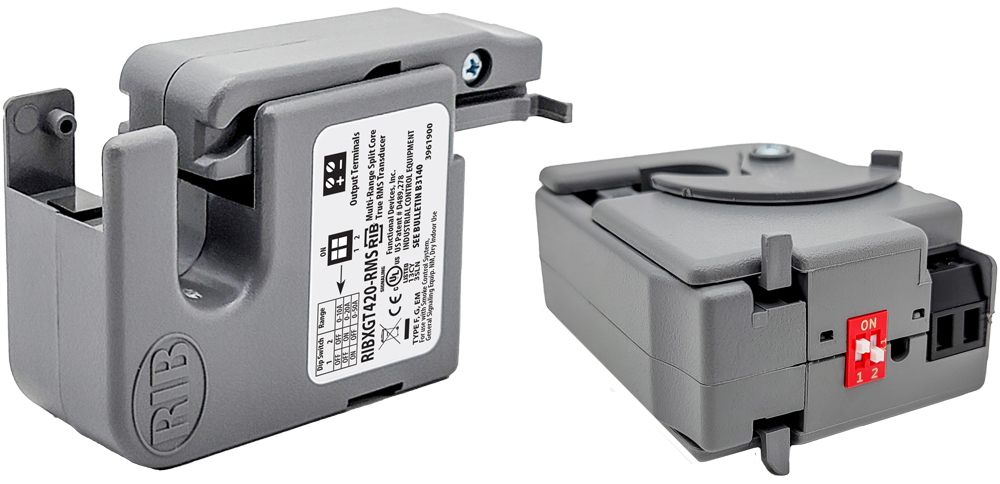RIBXGT420-RMS for Variable-Frequency Drive (VFD)

Functional Devices has approximately one million current sensors…give or take a million. Up until now, all those current switches and current transducers only worked at 50 or 60 Hz. Those are the frequencies that come out of the wall all around the world so if the load being monitored is powered straight from a breaker box, a wall outlet, or even a transformer – any old RIBXGTA or RIBXKTF will do. It’s when equipment starts straying from those frequencies that another type of current sensor is necessary, the RIBXGT420-RMS.
What is 60 Hz?
The hertz (symbol: Hz) is the unit of frequency in the International System of Units (SI), equivalent to one event (or cycle) per second. In the US, a few different voltages are floating around depending on whether the building is residential, commercial, or industrial. One thing they all share is that they are 60 Hz, or they oscillate 60 times a second. The sine wave below takes 1/60th of a second to oscillate, and the amplitude would be dependent on the AC voltage of the building.

This is a very consistent and predictable pattern which current sensors can exploit to give a very consistent and reliable indicator of if current is flowing through the conductor being monitored. What if there’s a load that isn’t 50 or 60 Hz?
Variable-Frequency Drive (VFD)
An AC motor’s revolutions per minute (RPM) is entirely dependent on the number of poles in the motor and the line frequency. The full equation is 120 * frequency / # of poles = RPM. If you’ve got a 4 pole motor and plug it directly into 60 Hz, it will rotate at 1,800 RPM. But running a motor at full speed can be wasteful. If only there was a way to vary the RPM. Well let’s go back to the equation. Changing the number of poles on the fly seems difficult. Changing the frequency…well that can be done…with a variable-frequency drive! How a VFD does that is beyond the scope of this blog but generally it’s going to exploit the inductive aspects of an AC motor to send a current waveform similar to the sine wave above. Except, the frequency will be different. Going back to the formula that means we now have a controllable RPM.
RIBXGT420-RMS

The RIBXGT420-RMS is a current transducer capable of measuring any type of AC current you can throw at it (as long as you don’t exceed the datasheet specifications). VFD? No problem. Square wave? Yes. A really poorly made UPS that outputs the minimum legal definition of a sine wave? The RIBXGT420-RMS can handle it. The “RMS” stands for “root mean square” which means it characterizes the whole wave and does some math to output an average current. When your VFD is pulsing at 200 Hz, have no fear that the RIBXGT420-RMS will understand it.
